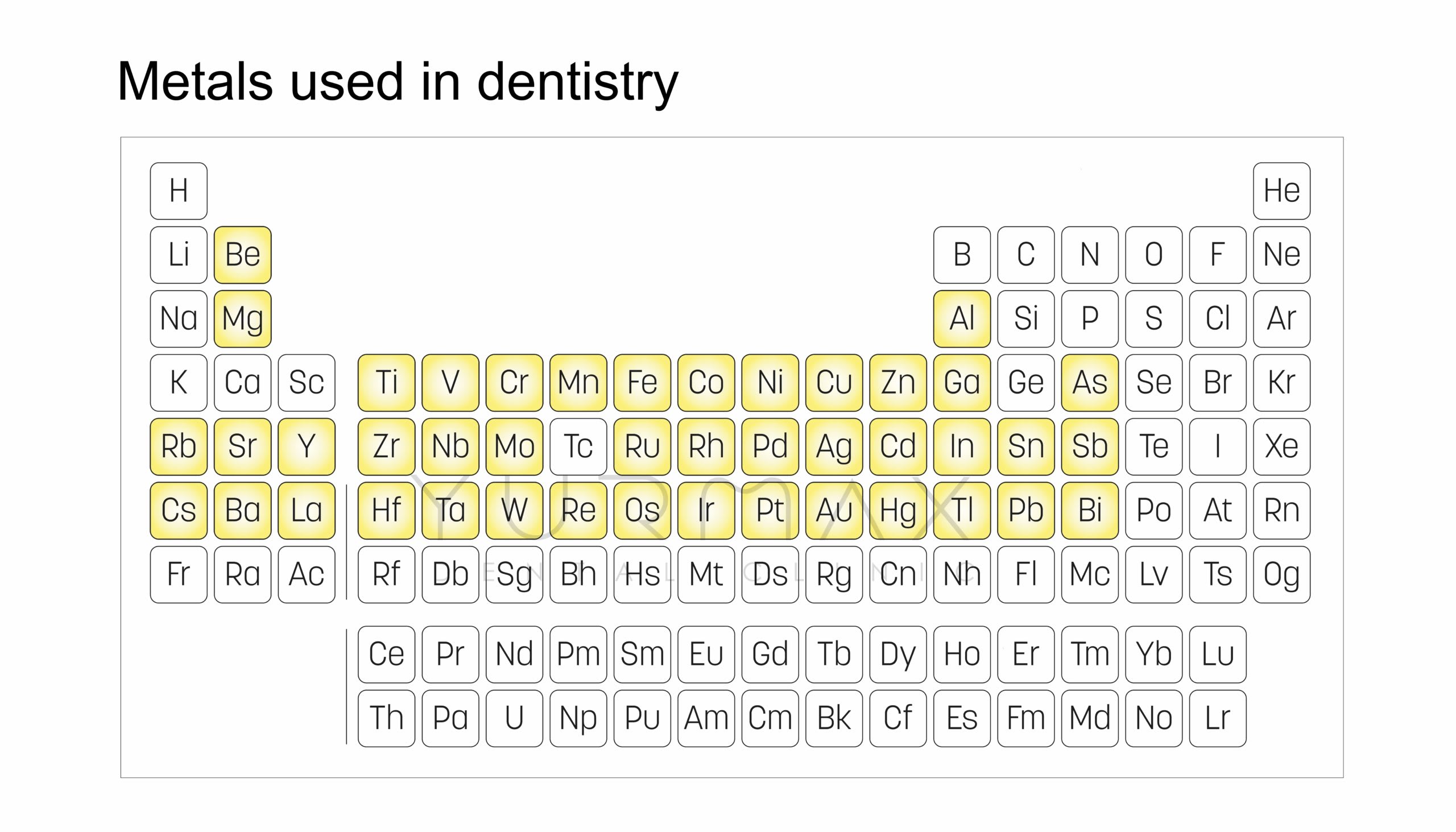Metals in the oral cavity: A burden on the immune system
A wide range of metals (mercury, platinum, copper, cobalt, aluminum, iron and chromium) have been proven to have cytotoxic, immunopathological, carcinogenic and oxidative stress enhancing effects. However, these metals are still commonly used for the production of crowns, bridges, implants and other structures in the oral cavity.
For us at the Yurmax clinic, this practice is incomprehensible. Why?
Metals are constantly exposed to an aggressive and unstable environment in the mouth with a significant mechanical, chemical and galvanic load. This leads to the excretion of metal particles into the surrounding tissues. Just a few days after the introduction of metal into the oral cavity, its presence can be detected in different parts of the body.
Metals can systemically affect the whole body through immune mechanisms. They bind to proteins and form metalloprotein complexes that induce the production of pro-inflammatory substances, such as tumor necrosis factor α (TNFα) and interleukin 1 (IL-1). This all negatively affects not only the tissue around the metal, but can also cause Type IV hypersensitivity and systemic inflammatory reactions.
The immunological aspect of the harmfulness of metals can be determined using the MELISA test (Memory Lymphocyte Immunostimulation Assay). If you would like to have a MELISA test performed, we recommend the A2C clinic.

The presence of various metals in the mouth further leads to the creation of the so-called galvanic effect: two different metals in a conductive solution create an electric current. Saliva in the mouth is rich in minerals and acts as an ideal electrolytic solution. For example, if you have a gold crown and amalgam filler, a galvanic current is created in your mouth. One metal works like the anode, the other acts as the cathode. This leads to the gradual corrosion of metal in the mouth. At high levels of electrical tension in the mouth, this often manifests as a metallic taste, disturbances in the sensitivity of the mucosa, headaches and other non-specific manifestations
When removing metal structures in the mouth at our clinic, we always use a dental dam (insulating latex-free “dental raincoat”). Its purpose is to prevent metal particles produced whengrinding from contaminating the mucous membranes and digestive tract. This procedure should be standard in all dental workplaces.